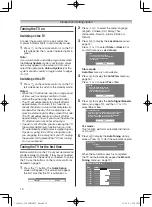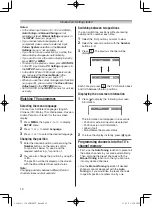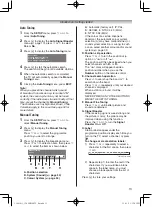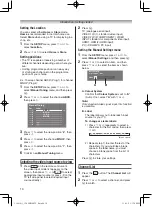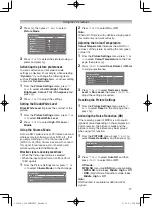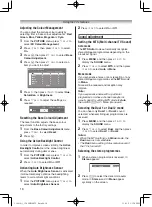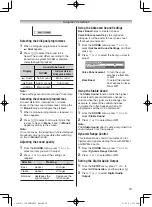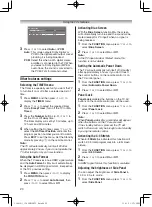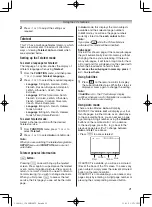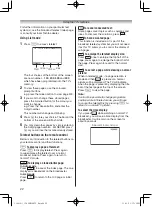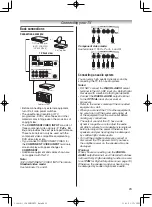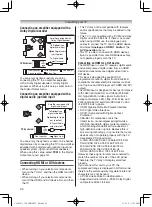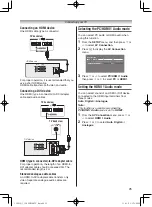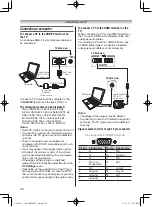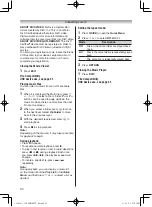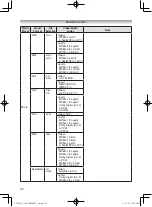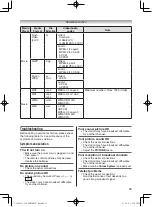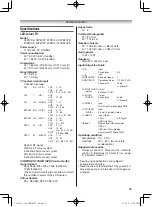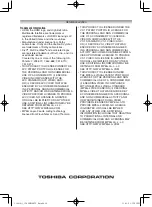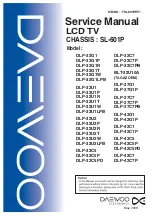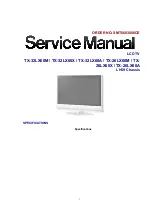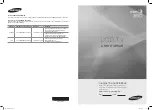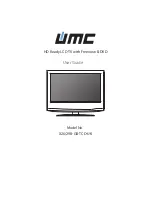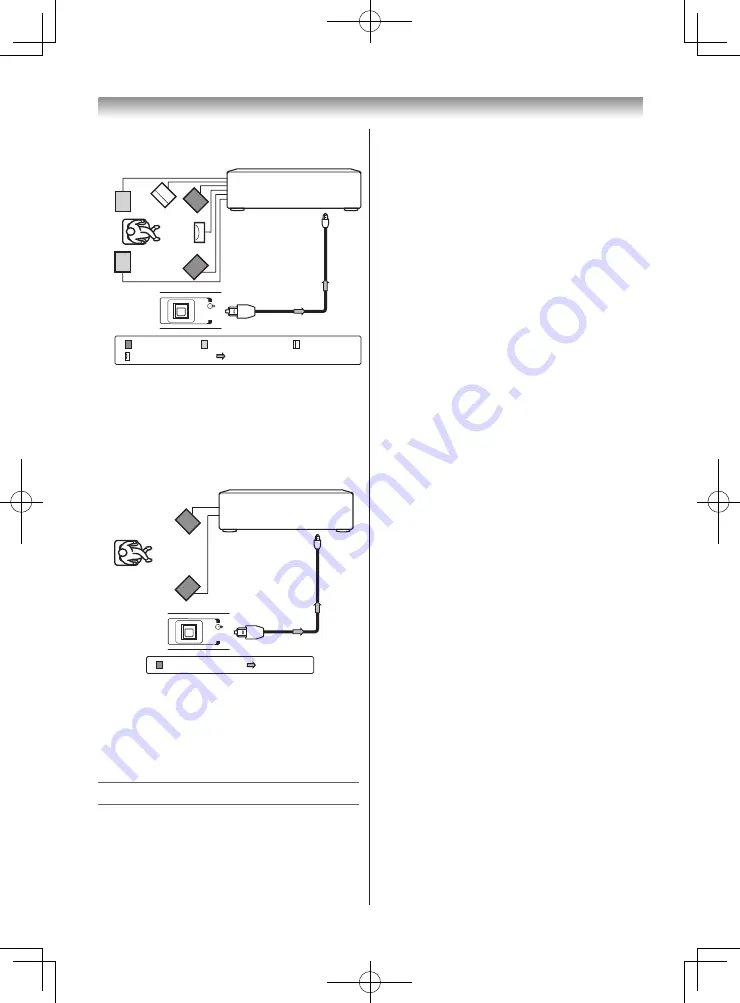
24
Connecting your TV
Connecting an amplifier equipped with a
Dolby Digital decoder
To Digital Audio
output terminal
To
Optical type
digital audio input
Optical digital cable
(not supplied)
Amplifier equipped with
Dolby Digital decoder
Front speaker
Surround speaker
Sub woofer
Centre speaker
Signal flow
TV back view
DIGITAL
AUDIO
You can enjoy dynamic realistic sound by
connecting the TV to an amplifier equipped
with a Dolby Digital decoder or Dolby Digital
processor. When using this setup, select Auto in
the Digital Output menu.
Connecting an amplifier equipped with a
digital audio (optical) input
Front speaker
Signal flow
To Digital Audio
output terminal
To
Optical type
digital audio input
Optical digital cable
(not supplied)
Amplifier equipped with
digital audio input
TV back view
DIGITAL
AUDIO
You can enjoy the dynamic sound of a 2-channel
digital stereo by connecting the TV to an amplifier
equipped with a digital audio (optical) input and
speaker system (right and left front speakers).
When using this setup, select
PCM
in the Digital
Output menu (
-
page 19).
Connecting HDMI or DVI devices
• When turning on your electronic components,
turn on the TV first, and then the HDMI and DVI
device.
• When turning off your electronic components,
turn off the HDMI and DVI device first, and then
the TV.
• This TV may not be compatible with features
and/or specifications that may be added in the
future.
• This TV is only operable with L-PCM and Dolby
Digital on 32/44.1/48 kHz. If there is no sound
when using HDMI, use the analogue audio
cables to connect the TV and the HDMI device,
and select
Analogue
in
HDMI 1 Audio
of the
AV Connection
menu.
• This TV is able to connect with HDMI devices.
But it is possible that some HDMI devices may
not operate properly with this TV.
Connecting an HDMI or a DVI device
The HDMI input on your TV receives digital audio
and uncompressed digital video from an HDMI
device and uncompressed digital video from a
DVI device.
This input is designed to accept HDCP
programme material in digital from CEA-861-D
compliant consumer electronic devices (such as
a set top box and DVD player with HDMI and DVI
output).
The HDMI input is designed for best performance
with 1080i (50 Hz/60 Hz) and 1080p (24/50/60
Hz) high-definition video signals, but will also
accept and display 480i, 480p, 576i, 576p, and
720p (50Hz/60 Hz) and VGA (VESA 640 × 480
@ 60/72/75 Hz) signals.
• HDMI: High-Definition Multimedia Interface
• DVI: Digital Video Interface
• HDCP: High-bandwidth Digital Content
Protection
• CEA-861-D compliance covers the
transmission of uncompressed digital video
with high-bandwidth digital content protection,
which is being standardized for reception of
high-definition video signals. Because this is
an evolving technology, it is possible that some
devices may not operate properly with the TV.
• Acceptable PC signal format:
S-VGA: VESA 800
5
600 @ 56/60/72/75 Hz
XGA: VESA 1024
5
768 @ 60/70/75 Hz
W-XGA: VESA 1280
5
768 @ 60/75 Hz
W-XGA: VESA 1360
5
768 @ 60 Hz
S-XGA: VESA 1280
5
1024 @ 60/75 Hz
However, these signal formats are converted to
match the number of pixels of the LCD panel.
Therefore, the TV may not display small text
properly.
If you connect this unit to your PC, the
compressed image is displayed in S-XGA mode,
therefore the picture quality may deteriorate and
characters may not be read.
• L-PCM: Linear-Pulse Code Modulation.
• Supported Audio format: L-PCM, Dolby Digital,
sample rate 32/44.1/48 kHz
110419c1_3240PB10ETV_En.indd 24
11.4.19 1:57:16 PM

